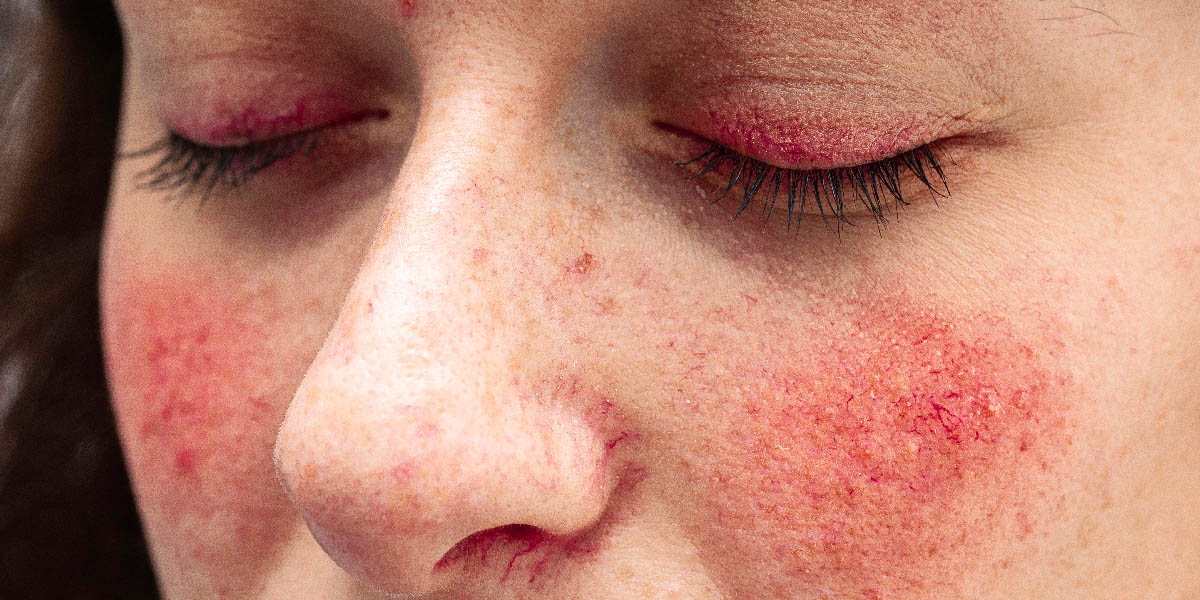There are many reasons why couperose may appear in your life. Find out how to prevent it or treat it if it has already appeared. Couperose is a dermatological condition characterized by the appearance of redness, irritation and small dilated capillaries in the form of filaments on the face.
Redness of the face is sometimes normal, especially because of the cold in winter; but when it becomes more or less permanent and increases, it is called couperose.
If couperose skin is not treated properly, it can lead to rosacea over time.
Because What Is It?
It is produced by an alteration of the blood microcirculation of the capillaries that irrigate the skin of the cheeks, nose and chin.
These small vessels are not very elastic. Therefore, when they are subjected to factors that produce recurrent contractions and vasodilation, they end up being permanently dilated, becoming more permeable and visible through the skin.
What Are The Symptoms Of Couperose?
The main symptom is the redness that occurs throughout the area due to the increased blood flow that occurs when the venules and arterioles dilate. These small vessels, losing their elasticity, end up dilating without returning to their normal size.
This redness and spider veins may or may not be accompanied by burning and heat in the affected area.
Telangiectasias also appear, which are small red or purple veins that can be seen through the skin in the form of spider web-like filaments or branching threads.
What Are the Causes?
As mentioned, couperose is due to a condition of the microcirculation in which the blood vessels remain dilated, so any factor that causes this dilation can be the cause of couperose in susceptible individuals.
- Sudden temperature changes: temperature changes cause blood vessels to contract and dilate. If they are brutal, they can end up causing a loss of elasticity of the vessels.
- Intense heat, wind, cold, etc. These climatic factors favor vascular changes.
- Blows or small traumas to the skin can also be the cause of the appearance and maintenance of redness.
- Smoking, because in addition to other harmful effects on health, it affects the microcirculation.
- Excessive alcohol consumption is also linked to circulatory problems.
- The application of irritating products to the skin, whether or not they are part of cosmetics, such as soaps, scrubs, creams, highly chlorinated or very calcareous water, etc.
- Exposure to the sun or UVA lamps.
- Stress, nerves or intense emotions that also dilate the blood vessels.
- Hot, spicy or very spicy foods and drinks: increased body heat and vasodilation.
- Pathologies, such as hypertension and diabetes, related to blood circulation.
- Hormonal changes: pregnancy, menopause, menstrual cycle, etc.
Who Is Affected?
Couperose is more common in people with fair, thin and sensitive skin, as this type of skin is more reactive and naturally reddens more easily.
It generally affects women more than men and, in addition, there is a genetic predisposition to suffer from it, i.e. it is hereditary.
How to Prevent It?
To prevent couperose, it is important to avoid the factors that trigger it.
It is essential to avoid exposure to the sun without protection. You should also avoid consuming toxins such as alcohol and tobacco and eat a healthy diet rich in antioxidants and vitamins, such as fruits and vegetables.
Tips for Taking Care of Your Couperose
First of all, remember that in order to receive the most appropriate treatment for your case, you should always visit your dermatologist. There are various cosmetic products that relieve and mitigate the effects of couperose on the skin:
- Cleanse the skin twice a day with gentle cleansers: micellar water, milk-free and leave-on soaps, thermal water, etc. Avoid products that you have to rinse off with water.
- Use highly moisturizing creams specific to this condition, which contain active ingredients that help improve circulation and soothe the sensation of burning, heat and irritation.
- Tinted creams, such as BB creams, are especially helpful. They not only treat the problem, but also cover or hide redness and protect your skin from the sun.
- Don’t use exfoliants or chemical peels that can further irritate the skin. If necessary, you can use an enzyme peel, which is gentler on delicate skin.
- Protect yourself from the sun at all times, every day. Even in winter and if it’s cloudy.
Here you are! With these couperose treatment tips, you will see how to prevent couperose from appearing or improve it if it has already appeared. How long have you been suffering from couperose? And how did you treat it so far? Let us know in the comments below.


